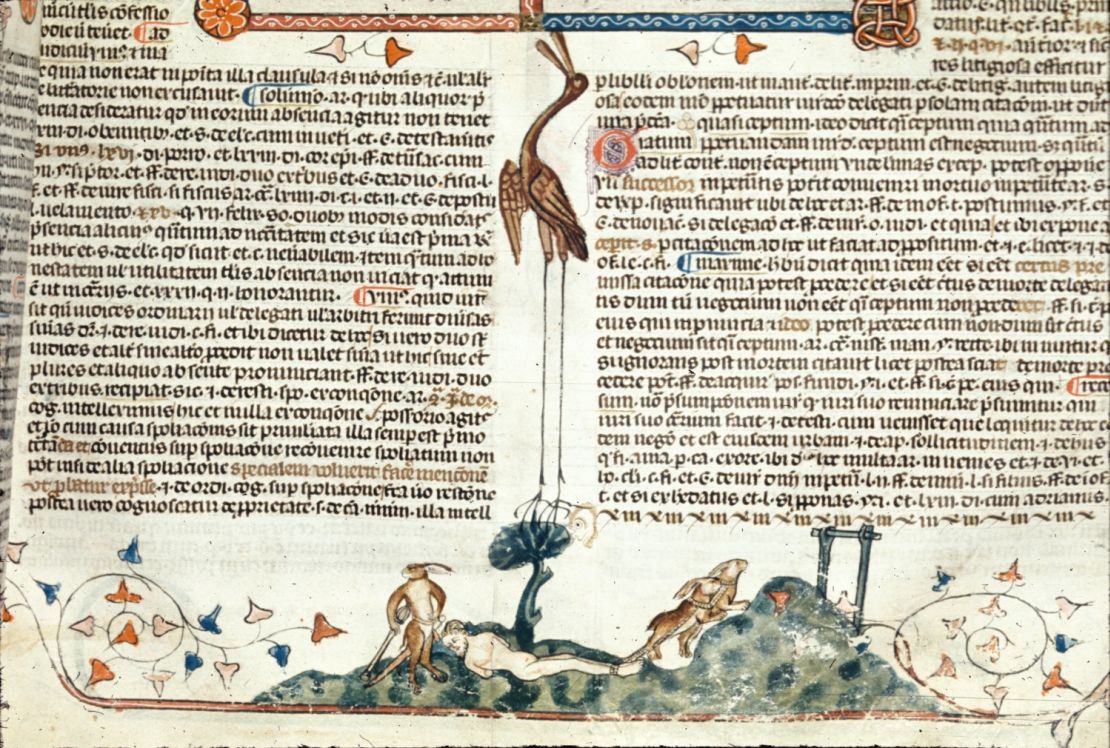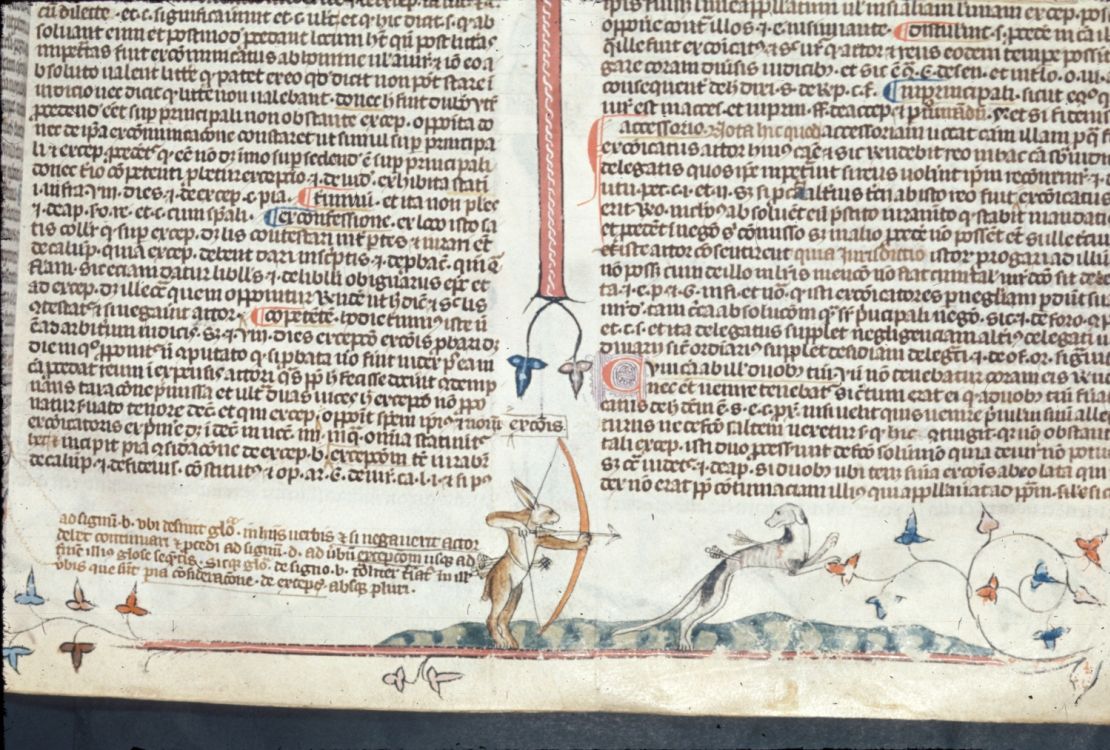Rabbits: cute, fluffy creatures; big ears, big teeth. Harmless? Wrong.
In the medieval period they were fierce, sword-wielding Leporids, happy to take on the rest of the animal kingdom – including humans.
Rabbits riding lions, rabbits riding humans, rabbits mutilating poor hapless knights in shining armor. Who knew “Monty Python and the Holy Grail” could be so germane?
These relatives of the Killer Rabbit of Caerbannog dwell not in caves but in the “bas-de-page” below the text of 14th century manuscripts, according to James Freeman, a medieval manuscripts specialist at Cambridge University Library.
Usually found in books made for the clergy, these illustrations – known as “marginalia” – were full of symbolism. Playful and subversive, they often thumbed the nose at authority figures.
There is no single meaning to the illustrations, says Freeman. There are, however, many interpretations.
Claire Ben Lakhdar, chief curator at the Bibliotheque Verdun, says the rabbits and dogs in the “Breviaire de Renaud de Bar” (1302-1304) represent courtly love between women and men.
Freeman says the rabbits found in the “Smithfield Decretals” (below) are an example of le monde renverse or le monder inverse – “the world turned upside down.” Instead of men and women hunting rabbits, humans were the target, turning on their erstwhile pursuers.

“This was a part of wider medieval life,” says Freeman. “There are other rituals and celebrations where ‘boy bishops’ or ‘lords of misrule’ were put in charge for the day, and their superiors made to do humble chores.”

Not everyone was impressed by these comic doodles. French Cistercian monk Bernard of Clairvaux, who died in 1153, described those in the Decretals as “ridiculous monstrosities,” according to the manuscript specialist.
“Good Lord,” said the monk. “Even if the foolishness of it all occasion no shame, at least one might balk at the expense.”
After all, these books were only available to the upper crust – perhaps ironic considering marginalia’s deconstruction of hierarchy.
“It was within these liminal spaces that such ideas could be safely, even boldly explored,” says Freeman; a space where society could be critiqued and questioned whilst hiding behind allusion.
Killer bunnies: not only merciless man slayers but social warriors too. Who knew?







































